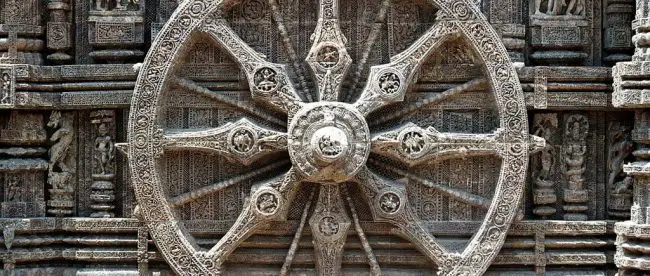Dharma in Buddhism Means …

Dharma is a key concept in Indian religions, and many people want to really know what dharma in Buddhism means. In this article, we shall explore how its meaning is perceived.

Dharma in Buddhism Means Many Things
The word “dharma” is rooted from the ancient Indian faiths and is found in Hindu and Jain teachings. For Buddhists, dharma refers to the second gem of the Three Jewels: Buddha, dharma (the teachings of the Buddha and the truth of the way things are) and sangha (people). It’s often defined as the “teachings of the Buddha”.
Dharma’s meaning comes close to the “natural law”. Its root word “dham” means “to support”. It maintains the natural order of the universe. It also refers to harmony, ethical conduct, and the right path. In some Hindu teachings, it is referred to as “sacred duty”.
You might also like:


Dharma in Theravada Buddhism
For the Theravada Buddhists, dharma is the nature or truth of Buddha’s teachings. It refers to the path of practice that Buddha taught to his followers. It also has 3 levels of meaning: the words of the Buddha, the practice of his teachings, and reaching enlightenment.
The late Bhikkhu said that dharma has a fourfold meaning: the world as it is, the laws of nature, the duties to be done based on the laws of nature, and the result of doing these duties.
It also has six aspects:
- It was taught by the Buddha.
- One can realize dharma through his/her own efforts.
- It is timeless and can be perceived in each moment.
- Each person has the right to prove it. It doesn’t have to be accepted faithfully.
- It allows a person to enter absolute Nirvana.
- It is perceived only through personal, intuitive insight

Dharma in Mahayana Buddhism
The Mahayana Buddhists have a similar perception of what dharma in Buddhism means. For them, it refers to both Buddha’s teachings and enlightenment. Often, the word takes in both meanings at once.
Mahayana Buddhists believe that one can’t understand dharma through reciting doctrines, but by realizing it. One has to be aware of the true nature of reality. Early scholars had the metaphor of “three turnings of the dharma wheel”, which refers to three revelations of Buddha’s teachings:
- First turning: when Buddha delivered his first sermon on the Four Noble Truths
- Second turning: perfection of wisdom or “sunyata”
- Third turning: the “Buddha nature” – the basic unity of existence.
In some texts, dharma means the expression of reality. It also means that all things are empty of self-essence.

The Dharma Body
While there are slight contrasts in their meanings, both Theravada and Mahayana Buddhists believe in the “dharma body” or “truth body”. A “Buddha” is an enlightened being that embodies dharma. In essence, dharma is abstract, and can only be visible in an enlightened person.
Dharma in Buddhism means many things, and there is no absolute meaning to it. But to this extent, we can say that it pertains to the nature of reality and the teachings and practices that make us see the nature of reality. It combines teachings, truths, facts, and natural laws. It is also an experience, and dharma is to get a sense of the facts of life.

Disclosure: At Buddhatooth.com we only mention the products that we’ve researched and considered worthy. But it’s important to note that we are a participant of several affiliate programs, including but not limited to VigLink and Amazon Services LLC Associates Program, an affiliate advertising program designed to provide a mean for us to earn fees by linking to Amazon.com and affiliated sites. As an Amazon Associate Buddhatooth.com earns from qualifying purchases.

